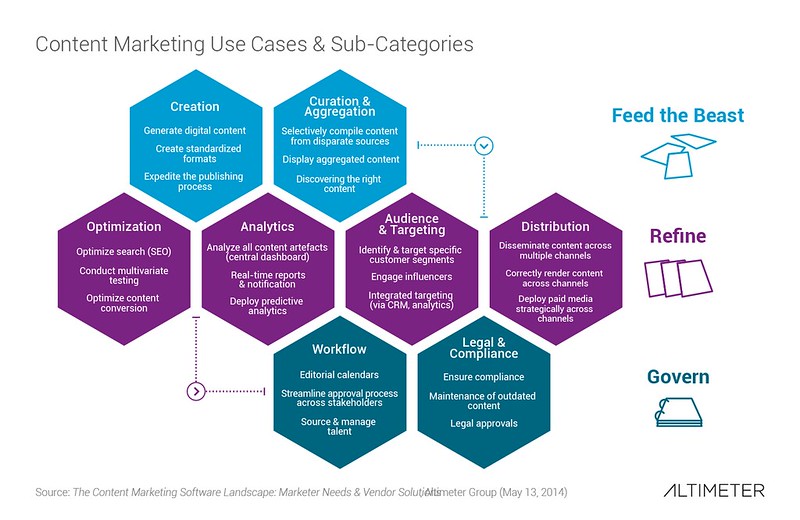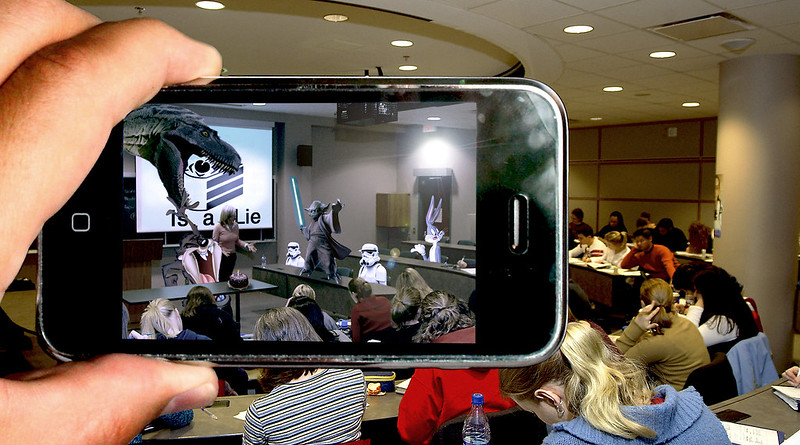Choosing the right content marketing channels is crucial for businesses looking to stand out in the digital world. As the content marketing landscape evolves, finding the best ways to connect with your audience becomes more important. This guide simplifies the process, helping you pick the most effective channels for 2024. It’s about turning challenges into growth opportunities and creating meaningful interactions with your audience.
What are Content Marketing Channels?
Content marketing channels are how your content is distributed to reach, engage, and convert your target audience. These channels are crucial in disseminating your message and can be categorized into:
Types of Channels
- Owned Channels: Directly controlled by your brand, including:
- Websites and blogs
- Email newsletters
- Social media profiles
- Earned Channels: Gained through the merit of your content and relationships, such as:
- Press mentions
- Social media shares
- Customer reviews
- Paid Channels: Purchased exposure for your content, featuring:
- Pay-per-click (PPC) advertising
- Sponsored posts on social media
- Influencer partnerships

Emerging Trends for 2024
The future of content marketing channels is vibrant, with new avenues emerging. As we look toward 2024, new channels are reshaping the content marketing landscape.
- Interactive Platforms: Utilizing AR and VR to create immersive experiences.
- Voice Search Optimization: Tailoring content for voice-activated searches.
- Decentralized Social Networks: Prioritizing privacy and user control.
- AI-driven Platforms: Offering personalized content distribution at scale.
These advancements signal a shift towards more engaging, personalized, and secure ways to connect with audiences, highlighting the importance of staying ahead in dynamic content marketing.

Analyzing Your Audience
Understanding your audience is foundational to selecting the right content marketing channels. Here’s how to dissect and align with your audience’s preferences:
Identifying Your Target Audience
To accurately identify your audience, consider:
- Demographic Insights: Age, location, job title, and income level.
- Psychographic Insights: Interests, values, challenges, and motivations.
Aligning with Audience Preferences
Matching content channels to your audience involves:
- Surveying Current Trends: Stay updated with where your audience spends their time online.
- Engagement Analysis: Review which platforms garner more engagement for content similar to yours.
- Feedback Loop: Use social listening and direct feedback to understand audience preferences.
By meticulously analyzing these facets, you can tailor your content marketing strategy to engage your audience effectively through their preferred channels, ensuring your message resonates and drives meaningful interactions.
Data-Driven Channel Selection
Making informed decisions about where to distribute your content is essential for maximizing reach and engagement. Here’s how to leverage data for channel selection:
Utilizing Analytics
Analytics play a pivotal role in understanding channel performance. Key points include:
- Tools: Google Analytics, Semrush, and Hootsuite provide insights into audience behavior and content interaction.
- Metrics to Track: Page views, bounce rates, engagement rates, and conversion rates help gauge content performance.

Performance Assessment
Evaluating the effectiveness of content marketing channels involves:
- Key Performance Indicators (KPIs): Track specific KPIs such as lead generation, sales conversion, and customer retention rates.
- ROI Analysis: Calculate the return on investment for each channel to identify the most cost-effective strategies.
By systematically analyzing these data points, you can prioritize content marketing channels that deliver the best performance, ensuring your resources are invested in avenues that yield the highest returns.
Content Adaptation Across Channels
Effectively distributing content across different channels requires thoughtful customization and a strategy for maintaining consistency.
Content Customization
Adapting your content for each channel is crucial for maximizing engagement. Best practices include:
- Format Adaptation: Tailor content format to fit the channel, such as short videos for Instagram and detailed articles for LinkedIn.
- Tone Adjustment: Align the tone with the channel’s audience—more formal for LinkedIn, casual and engaging for Twitter.
- Engagement Strategies: Utilize interactive elements like polls on Instagram or Q&As on Facebook to boost engagement.
Cross-Channel Consistency
Maintaining a unified brand voice across platforms is essential for brand recognition. Strategies for consistency:
- Unified Messaging: Ensure core messages and values are consistent, even when the presentation differs.
- Visual Cohesion: Use consistent branding elements, such as logos and color schemes, across all channels.
- Content Calendar: Plan content across channels to align messages and campaigns, enhancing brand coherence.
Adhering to these practices ensures your content resonates with the intended audience on each platform while upholding a cohesive brand identity.
Integration of AI and Technology
The incorporation of AI and technology revolutionizes how content is distributed across channels, making the process more efficient and personalized.
Leveraging AI
AI transforms content distribution by:
- Content Personalization: Using AI to analyze user data and preferences, creating tailored content for individual users.
- Predictive Analytics: Forecasting the best times and channels for content distribution to maximize engagement.
- Automated Optimization: Continuously testing and optimizing content performance across channels without manual intervention.
Tech-Driven Strategies
Innovative technology solutions facilitate seamless content distribution:
- Content Management Systems (CMS): Platforms like WordPress and HubSpot offer tools for scheduling and publishing content across multiple channels.
- Social Media Management Tools: Buffer and Hootsuite allow for the scheduling of posts, analytics, and engagement tracking.
- AI Content Creation Tools: Tools like GPT-3 assist in generating content drafts, headlines, and even personalized email messages.
Adopting these AI and technology-driven approaches enables marketers to distribute content more effectively, ensuring that the right message reaches the right audience at the right time.
Emerging Channels and Future Trends
The landscape of content distribution is rapidly evolving, with new platforms and technologies emerging to offer fresh avenues for engagement.
Spotlight on Emerging Channels
Stay ahead of the curve by exploring:
- Augmented Reality (AR)/Virtual Reality (VR): Immersive experiences that can transform storytelling and customer engagement.
- Voice Search Optimization: Tailoring content for voice-activated searches to cater to the growing use of smart speakers.
- Blockchain for Content Security: Using blockchain technology to protect content and ensure authenticity.
- Interactive Video Content: Leveraging platforms like TikTok for engaging and interactive user experiences.
Adapting to Future Trends
Businesses can remain competitive by:
- Continuous Learning: Keeping abreast of technological advancements and platform updates.
- Flexibility in Strategy: Being willing to experiment with new channels and adapt strategies based on performance data.
- Customer-Centric Approaches: Focusing on delivering value and relevance to the audience, regardless of the channel.
Embracing these emerging channels and trends ensures that businesses can effectively connect with their audience, leveraging the latest innovations for content distribution.
Crafting a Multi-Channel Content Strategy
Developing and executing a multi-channel content strategy requires careful planning and continuous monitoring to ensure effectiveness and adaptability.
Strategic Planning
A comprehensive framework includes:
- Audience Analysis: Deep dive into audience demographics and preferences to select appropriate channels.
- Channel Selection: Choose channels based on audience insights, content type, and resource availability.
- Content Customization Plan: Outline how content will be adapted across selected channels to meet audience expectations.
- Integration of Technology: Leverage AI and technology for content personalization and distribution efficiency.
- Performance Metrics: Define clear KPIs for each channel to measure success.
Execution and Monitoring
Effective execution and ongoing monitoring are key to a successful strategy:
- Content Calendar: Develop a detailed calendar outlining what and when to publish across channels.
- Agile Implementation: Be prepared to adjust the strategy based on real-time performance data and feedback.
- Regular Analysis: Use analytics tools to monitor KPIs, understand audience behavior, and track engagement.
- Continuous Improvement: Iteratively refine the strategy, incorporating new technologies, channels, and audience insights.
By following this structured approach to crafting and implementing a multi-channel content strategy, businesses can ensure their content resonates with the intended audience, maximizes reach, and drives engagement across all platforms.
Make Every Channel Work Harder for You with Flying V Group
Capturing your audience’s attention across the myriad of content marketing channels requires more than just presence; it demands strategic precision and creativity. At the same time, falling behind on the latest content marketing channels can mean missing out on valuable engagement and growth opportunities.
Flying V Group stays at the forefront of emerging trends and technologies, positioning your content to captivate and convert, no matter the platform. By leveraging our expertise, you’ll simplify your content distribution process and amplify your reach and engagement, ensuring your message is heard loud and clear across all relevant channels.
FAQs
What is a content marketing channel?
A content marketing channel is a medium through which content is distributed to reach and engage an audience. It includes digital platforms like social media, blogs, email, and more.
What is channel content?
Channel content refers to the specific material created and tailored for distribution on a particular platform or channel, designed to engage the platform’s audience effectively.
What are the three 3 platform categories for content distribution?
The three platform categories for content distribution are owned platforms (e.g., websites and blogs), earned platforms (e.g., press mentions, social shares), and paid platforms (e.g., PPC, sponsored content).
What are the different types of content marketing?
Different types of content marketing include blog posts, videos, podcasts, infographics, email newsletters, social media posts, webinars, and eBooks.
What is content marketing with example?
Content marketing is a strategy to create and distribute valuable, relevant content to attract a target audience. For example, a company blog providing tips related to its products or industry insights is content marketing.






0 Comments